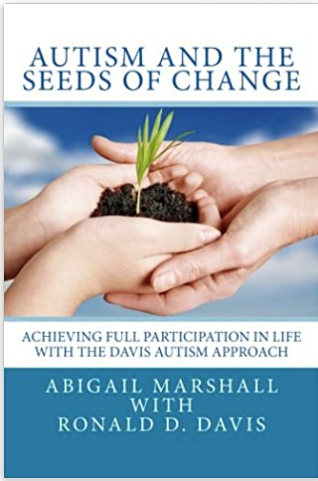The Davis Autism Approach is a non-invasive, gentle approach designed to allow autistic individuals to participate more fully in life.
This one-on-one program can be conducted by a Davis Autism Approach Facilitator or by a parent or loved one who can be trained and mentored by a Davis Autism Facilitator-Coach. The program incorporates many of Ron Davis’ “tried and trusted” methods which have been used successfully worldwide over the past 28 years assisting those with learning differences. Ron Davis has been working successfully with autistic individuals throughout this time and has now made this work accessible to others through the Davis Autism Approach.
There are 3 parts to the program:
- Individuation - This is a focusing technique, which allows the individual to develop accurate perception of their senses. Along with clay modeling, this builds a stronger awareness of "self".
- Identity Development - With a stronger awareness of self and accurate perception, a greater understanding of the world can be developed. Thirty "life concepts" are created through clay modeling and real world exploration. This builds on and strengthens existing identity and understanding.
- Social Integration - When the first two stages have been completed, there is a sufficient foundation upon which to build an understanding for establishing relationships with others. Key concepts, which are the foundation for all human relationships, are explored through clay modeling and can be built upon depending on the needs or requests of the individual.
Autism and the Seeds of Change: Achieving Full Participation in Life through the Davis Autism Approach
An in-depth look at a revolutionary approach to empower individuals with autism, and provide the understanding and tools needed to achieve their full potential. The Davis Autism Approach is uniquely geared to the autistic perspective, and enables each person to make sense of their world and the motivations and behaviors of others around them. This book explores the history of development of the Davis method, explores its connections to emerging scientific research, and takes the reader on a guided journey through the three phases of the program: Individuation, Identity Development, and Social Integration.
 English (United Kingdom)
English (United Kingdom)  Русский (Россия)
Русский (Россия) 